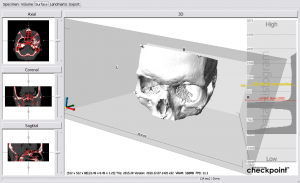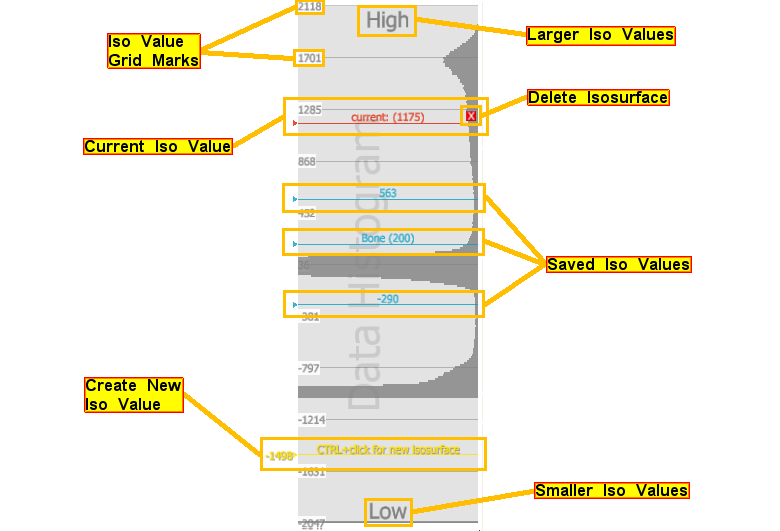What is isosurfacing?
Isosurfacing is a visualization technique for extracting a surface from 3D volumetric data, such as a CT or MRI scan. The technique, first developed by researchers at GE called Marching Cubes, essentially started the 3D medical visualization industry. Today, isosurfacing is a standard visualization technique that provides effective display of complex data.
Mathematically, isosurfacing represents a single-value (hence the iso part) within a function. For example, a single altitude within a topography map results in isolines (or contour lines), which are the 2D equivalent to a 3D isosurface.
In medical imaging, an isosurface can be extracted from a CT scan. The CT scan represents tissue density values such as bone, soft tissue, air, etc. By selecting a single density value it is possible to visualize a surface corresponding to the selected tissue type.
How to extract isosurfaces
Checkpoint’s surface tab presents the loaded surface or the volume’s isosurface in the 3D window.
The data histogram on the right side of the 3D window can change the iso value used for isosurfacing.
Hold CTRL and left click on the histogram to set a new iso value and recompute the isosurface. Iso values may only be created when the surface mesh is visible. Red indicates the current iso value, while blue indicates saved iso values, which can restore themselves by left clicking on the line below the number. The current iso value may be deleted by left clicking the red “X” on the right side of the number in parenthesis. This deletion option only appears when more than one iso value exists.
References
- William E. Lorensen and Harvey E. Cline. 1987. Marching cubes: A high resolution 3D surface construction algorithm. SIGGRAPH Comput. Graph. 21, 4 (August 1987), 163-169.
- Cline HE, Lorensen WE, Ludke S, Crawford CR, Teeter BC. Two algorithms for the three-dimensional reconstruction of tomograms. Med Phys. 1988 May-Jun;15(3):320-7.

